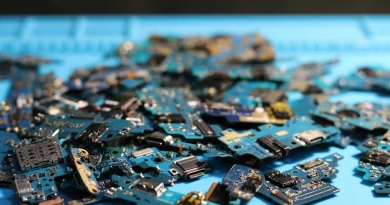What is Spatial Computing and Why is Everyone Talking About It?
Just a few years ago, the tech industry was buzzing with a single word: “metaverse.” Today, that word has been almost entirely replaced by a new, more sophisticated-sounding concept: spatial computing.
Apple, with the launch of its Vision Pro, intentionally branded it not as a VR or AR headset, but as the world’s first “spatial computer.” This wasn’t just clever marketing; it was a deliberate signal of a fundamental shift in how we think about the future of computing.
But what does spatial computing actually mean? Is it just a new buzzword for VR, or is it something genuinely different? Here’s what you need to know.
What is Spatial Computing, Really?
At its core, spatial computing is the blending of digital information and digital objects with our physical world, in a way that allows the two to interact with each other.
Think about how we compute today. We interact with digital information through flat, rectangular screens—our phones, our tablets, our monitors. These are windows into a digital world.
Spatial computing breaks through that window. It takes the digital information and places it in our physical space. A weather app isn’t a box on a screen anymore; it’s a 3D, holographic cloud floating in your living room. A video call isn’t a flat face on a screen; it’s a life-sized “persona” sitting on the couch across from you.
Crucially, the system is aware of the space around you. A digital ball will bounce off your real-world floor. A virtual screen can be “pinned” to a specific wall in your office. This seamless interaction between the real and the virtual is the key to spatial computing.
It’s More Than a Headset: The Key Ingredients
While headsets like the Apple Vision Pro and Meta Quest 3 are the primary tools for experiencing spatial computing today, the concept is powered by a convergence of several key technologies:
- 3D Environmental Mapping: The device constantly scans your surroundings using cameras and LiDAR sensors to build a real-time 3D map of your room. This is how it knows where the walls, floors, and furniture are.
- Advanced Input Methods: Instead of just a mouse and keyboard, you interact with digital objects using more natural methods, like your hands (hand tracking), your eyes (eye tracking), and your voice.
- Powerful On-Device AI: Artificial intelligence is the brain that makes it all work, understanding the spatial data, interpreting your gestures, and ensuring digital objects behave realistically within your physical environment.
So What Can You Actually Do With It?
While still in its early days, the practical applications are already emerging, moving far beyond just gaming.
- Productivity: Imagine surrounding yourself with as many giant virtual monitors as you want, all floating in the space around you. This is the new “corner office.”
- Design & Collaboration: An architect can place a full-scale 3D model of a building in an empty lot to see how it looks. A team of engineers, located across the globe, can all gather around a single, virtual 3D prototype of a new car engine, manipulating it with their hands as if it were really there.
- Education & Training: A medical student can practice a complex surgery on a realistic, holographic human body. An aviation mechanic can see a digital overlay of instructions directly on the jet engine they are repairing.
- Entertainment: Your living room can be transformed into a personal IMAX theater, with a screen that feels 100 feet wide, or a basketball court can be overlaid onto your floor to watch the game in a completely new way.
Why is Everyone Talking About It Now?
The reason “spatial computing” has replaced “the metaverse” is that it represents a more grounded and immediately useful vision. The metaverse was a vague promise of escaping to a different, fully virtual world. Spatial computing is about enhancing the world we’re already in.
With the hardware finally becoming powerful enough to create a believable and seamless experience, this is no longer a futuristic concept. It is the next logical step in the evolution of human-computer interaction, a shift as fundamental as the move from the command line to the graphical user interface. The era of the flat screen is ending; the era of computing in three dimensions has begun.




